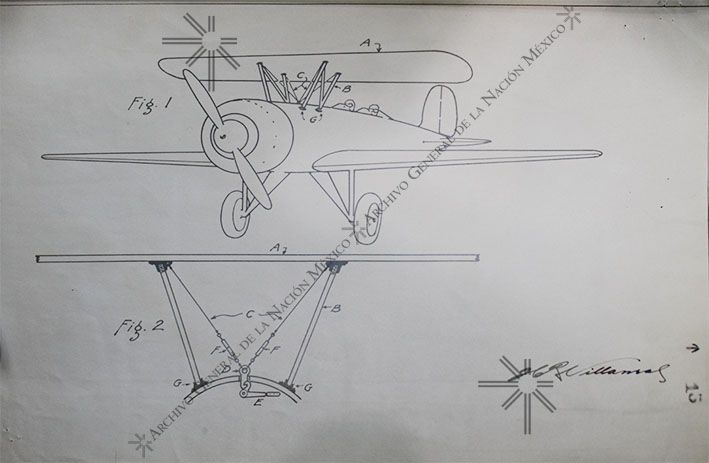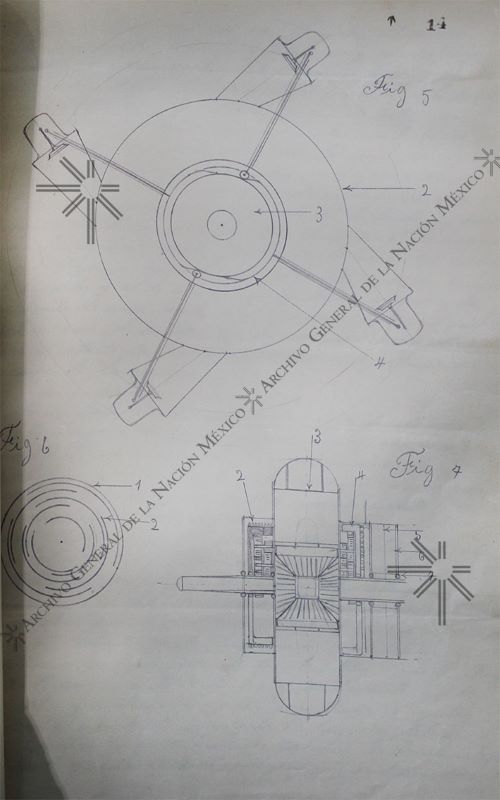The Early Years of Aeronautics in Mexico: Regulations and New Air Routes Management
Explore the early years of aviation in Mexico through historical documents and photographs. From the first aeronautical practices to the creation and regulation of air routes, this article covers the development of aviation in Mexico during the 1910s–1940s.

Exploring the history of aviation in Mexico through the fascinating photographs and documents stored in the AGN, one can trace the origins of this mode of transport in the early 20th century. From the first daring attempts at flying to the creation and regulation of air routes and proposals for improving aircraft, the development of aviation in Mexico is a story of innovation, exploration, and progress.
To fully understand the evolution of aviation in Mexico, one must delve into the period from 1910 to the 1930s. During this time, the country was in the midst of an experimental phase, testing communication routes and working to improve aircraft design. The Secretariat of Communications and Public Works holds a treasure trove of documents that provide invaluable insights into this exciting time.
The origins of Mexican aviation can be traced back to the last years of Porfirio Diaz's government when Federico Cervantes Muñozcano was appointed as lieutenant of the Construction Engineers Corps in 1909. His mission was to travel to France to learn about military aerospace and create an aerial signals organization in the Army. It wasn't until January 8, 1910, however, that Alberto Braniff's flight in a motorized airplane marked the first-ever flight not only in Mexico but in all of Latin America, ushering in the dawn of aviation in the region.
Throughout the 1910s and 1920s, aviation in Mexico continued to gain momentum, with pilots performing daring feats in demonstration and show planes. The military, meanwhile, continued to focus on aviation as a tool for military operations. It was during this time that the first proposals from American airlines arrived, seeking to provide aeropostal services in Mexican territory. However, due to the lack of regulations to govern these new services, these proposals were rejected by the Secretariat of Communications and Public Works.
To address this issue, the Technical Section of Air Navigation was established within the Directorate of Railways, using railway regulations as a basis to establish rules governing commercial air traffic. This paved the way for the establishment of new routes, such as the air route connecting Mexico City with New York City which was inaugurated in 1926.
At the national level, companies began to request permits for exploration and the establishment of air routes. Anahuac Airmail Service of México S.A., owned by Fernando N. González, was granted a concession in 1929 to establish a route from Colima to the region of Suchiate, in Chiapas, with stopovers in different towns of Guerrero. This route connected the southern part of the country to Mexico City, extending the postal service that already covered several northern regions.
The 1930s saw a push towards the development of industrial aeronautics, with support being sought from the Secretariat to encourage new inventions or studies for adaptable mechanisms for aircraft. Engineers like Humberto Ramirez Villarreal and Samuel Hernández proposed new aircraft designs, but their projects were met with varying degrees of success. Ramirez's proposal for an auxiliary wing was deemed unworkable, while Hernández was referred to the Military Aviation Department for technical support.
By the 1940s, Mexico experienced a boom in air companies due to the high demand generated during World War II. However, as the global economy stabilized and airline operations returned to normal, smaller airlines struggled to keep up with the high operating costs and were gradually absorbed by more powerful competitors like Mexicana de Aviación, which remained the dominant player in the market for many years.
The development of aviation in Mexico has been a remarkable journey, from the early days of experimental flights to the establishment of commercial air routes and the ongoing search for innovative aircraft designs. With the help of the invaluable resources held by the AGN, we can continue to explore the rich history of aviation in Mexico.
In the decades that followed, Mexico's aviation industry continued to grow and evolve. By the 1960s and 1970s, the country had established itself as a major player in the global aviation market. Mexican airlines began to expand their routes beyond the borders of the country and into the wider world. In 1965, Mexicana de Aviación became the first Latin American airline to offer transatlantic flights, connecting Mexico City with Madrid.
The 1980s saw the liberalization of the aviation industry in Mexico, which led to the emergence of new airlines and increased competition. This period also saw the development of new airports and the modernization of existing ones, such as the Mexico City International Airport, which became one of the busiest airports in the world.
Today, Mexico's aviation industry continues to thrive. The country is home to several major airlines, including Aeroméxico, Interjet, and Volaris, which offer flights to destinations across Mexico and around the world. The aviation industry is also an important driver of the Mexican economy, contributing billions of dollars annually and supporting thousands of jobs.
In conclusion, tracing the history of aviation in Mexico reveals a fascinating story of innovation, perseverance, and progress. From the first experimental flights of the early 20th century to the bustling airports of today, Mexico's aviation industry has come a long way. By continuing to invest in infrastructure and technology, Mexico is poised to remain a key player in the global aviation market for years to come.
![Military aircraft models Corsair V-99M [attributed], ca. 1935-1942.](https://www.mexicanist.com/content/images/2023/02/Corsair-V-99M-model-military-aircraft-attributed-ca-1935-1942.jpg)
![Aviation practice plain [attributed], ca. 1935-1942, AGN.](https://www.mexicanist.com/content/images/2023/02/Aviation-practice-plane-attributed-ca.-1935-1942.jpg)
![Airplanes flying overhead in aeronautical practice [attributed], ca. 1935-1942.](https://www.mexicanist.com/content/images/2023/02/Airplanes-flying-overhead-in-aeronautical-practice-attributed-ca.-1935-1942.jpg)


![Mexicana de Aviación airplane at Mexico City's Benito Juárez Airport [attributed], undated.](https://www.mexicanist.com/content/images/2023/02/Mexicana-de-Aviaci-n-airplane-at-Mexico-City-s-Benito-Ju-rez-Airport.jpg)
Full Citation: Nación, Archivo General de la. “Los Primeros Años De La Aeronáutica En México: El Establecimiento De Sus Regulaciones Y La Gestión De Nuevas Rutas Aéreas.” gob.mx, 21 Feb. 2023, www.gob.mx/agn/es/articulos/los-primeros-anos-de-la-aeronautica-en-mexico-el-establecimiento-de-sus-regulaciones-y-la-gestion-de-nuevas-rutas-aereas?idiom=es.




